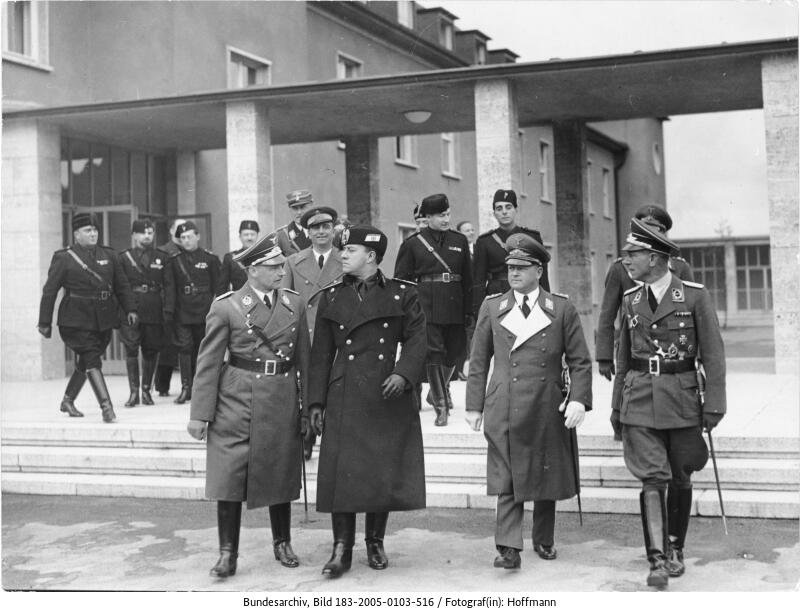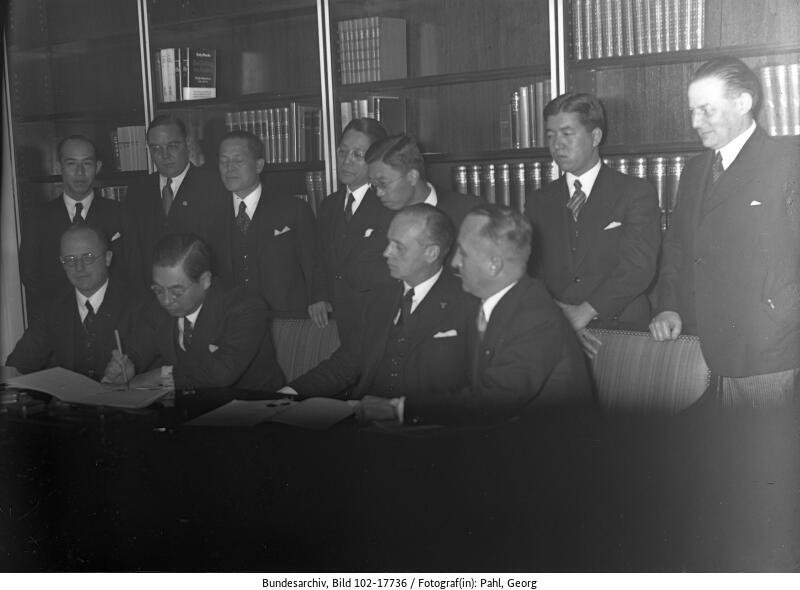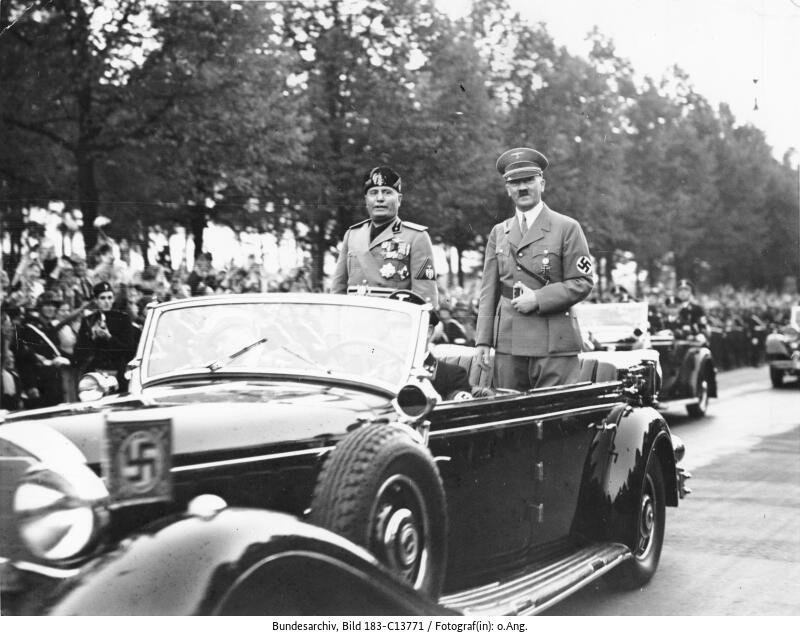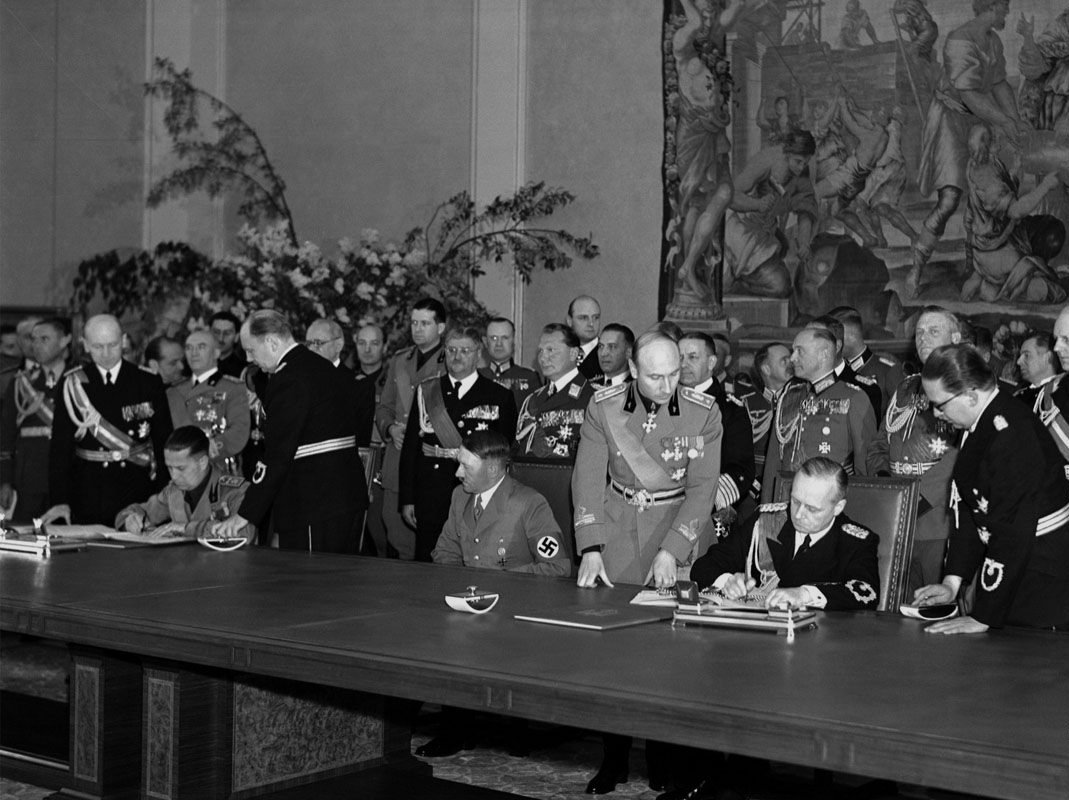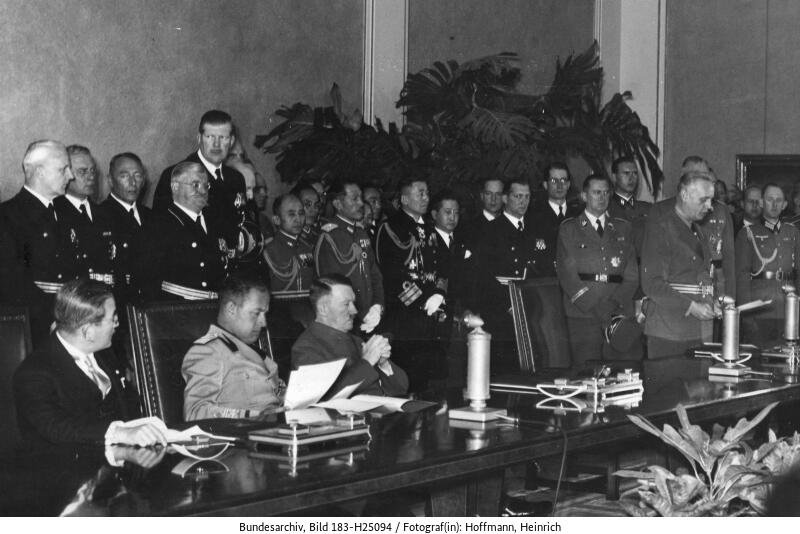In October 1936, Hitler received the Italian Minister of Foreign Affairs, Galeazzo Ciano. Their meeting resulted in a secret friendship treaty between Italy and Germany. Benito Mussolini, Italy’s fascist leader, gave a speech shortly afterwards, in which he spoke of the Rome-Berlin Axis, around which Europe from then on would revolve. This is where the name ‘Axis Powers’ came from.
Nazi Germany and fascist Italy become friends
Oct. 25, 1936 Berlin
One month later, Germany signed a treaty with Japan: the Anti-Comintern Pact. In this treaty, the two countries agreed to support each other in the fight against communism. Italy joined the pact a year later.
In 1939, Germany and Italy expanded their cooperation in the Pact of Steel: they promised to help each other if one them went to war with another country. During the Second World War, Germany mainly supported Italy, which turned out to have a much weaker army.
On 27 September 1940, Germany, Italy, and Japan agreed on military cooperation in the Tripartite Pact. From that moment on they were called the Axis Powers, which referred to the Rome-Berlin-Tokyo Axis. Several of Germany's allies later joined the Tripartite Pact: Hungary, Slovakia, Romania, Bulgaria, Yugoslavia, and Croatia.
